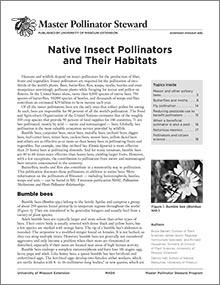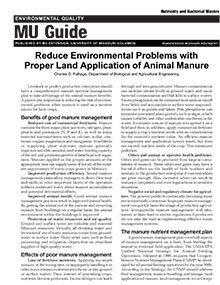

Reduce Environmental Problems With Proper Land Application of Animal Manure
Reviewed
Learn how to manage livestock manure to enhance soil health, reduce fertilizer costs, and protect water quality through proper application practices.
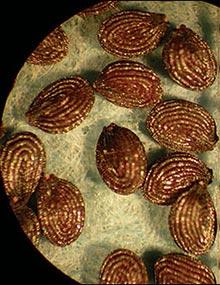
Missouri Weed Seeds, Page 13
Reviewed
Explore the Brassicaceae (Mustard) family, one of Missouri's largest plant groups, including common species like yellow rocket and wild mustard.
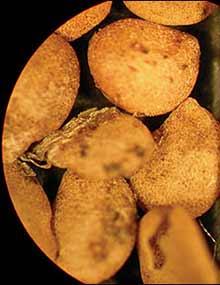
Missouri Weed Seeds, Page 45
Reviewed
This page details common weed species in Missouri's nightshade family, including seed images with millimeter rulers for scale.

Managing Nitrogen to Protect Water Quality
Reviewed
How is nitrogen lost from the soil?Nitrogen is primarily lost by three pathways:
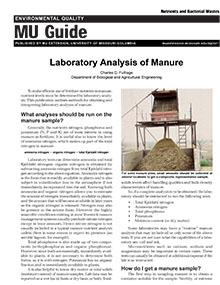
Laboratory Analysis of Manure
Reviewed
Laboratory analysis of manure determines nutrient levels—nitrogen, phosphorus, potassium—and moisture content for effective fertilizer use.
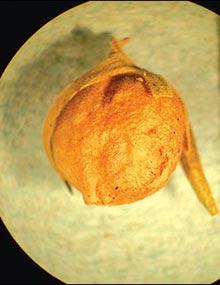
Missouri Weed Seeds, Page 16
Reviewed
Caprifoliaceae (Honeysuckle family) includes several species of honeysuckle, viburnum and elderberry.

Missouri Weed Seeds, Page 48
Reviewed
Information about grape family weed seeds, including Virginia creeper and raccoon grape, with images and millimeter-scale references.

Gases and Odors From Swine Wastes
Reviewed
Gases from swine waste, such as ammonia and hydrogen sulfide, can impact air quality and health in confinement facilities.

Missouri Weed Seeds, Page 19
Reviewed
Most of the members of Convolvulaceae (Morningglory family) are vining plants, including several common species of morningglories, bindweeds and the parasitic group of plants, dodders.
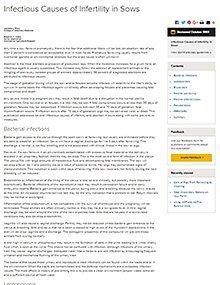
Infectious Causes of Infertility in Sows
Reviewed
This webpage discusses infectious causes of infertility in sows, including bacterial infections, their impact on reproduction, and preventive measures.

Break-even Hauling Distance: Tractor-Pulled Manure Spreaders
Reviewed
This publication guides livestock producers in calculating the maximum distance manure can be hauled using tractor-pulled spreaders without incurring additional costs.
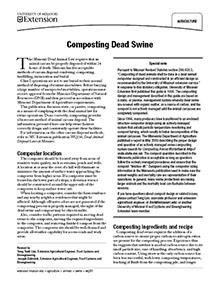
Composting Dead Swine
Reviewed
Composting swine carcasses with organic matter offers a low-effort, biosecure way to meet Missouri's animal mortality disposal requirements.
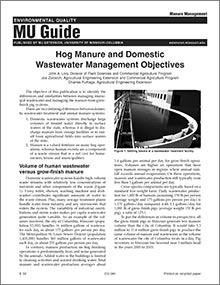
Hog Manure and Domestic Wastewater Management Objectives
Reviewed
The objective of this publication is to identify the differences and similarities between managing municipal wastewater and managing the manure from grow-finish pig systems.

Missouri Weed Seeds, Page 22
Reviewed
The only two members of Dipsacaceae (Teasel family) that are known to occur in Missouri are cutleaf and common teasel.

Manure Management in Hoop Structures
Reviewed
Learn how to manage manure in swine hoop barns with proper bedding, handling methods, and solid manure storage practices.
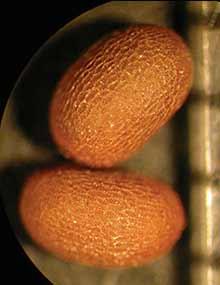
Missouri Weed Seeds, Page 25
Reviewed
The majority of Geraniaceae (Geranium family) plants present in Missouri are geraniums. There are at least five species known to occur in the state.
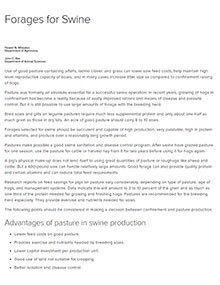
Forages for Swine
Reviewed
It is still possible to use large amounts of forage with the breeding herd. Visit our site to learn about using Forages for Swine.

Missouri Weed Seeds, Page 28
Reviewed
Besides being considered weedy plants, several members of Liliaceae (Lily family) are commonly cultivated. Such members include asparagus, yucca and many cultivars of daylilies.
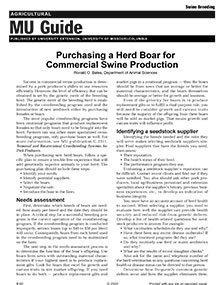
Purchasing a Herd Boar for Commercial Swine Production
Reviewed
Selecting the right herd boar is crucial for enhancing genetics in commercial swine production. This guide outlines key steps for successful boar acquisition.
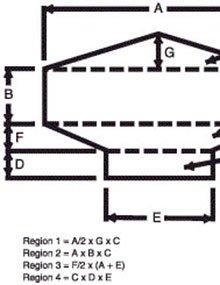
Calibrating Manure Spreaders
Reviewed
This guide provides practical steps to accurately calibrate manure spreaders, ensuring efficient nutrient application and environmental compliance.
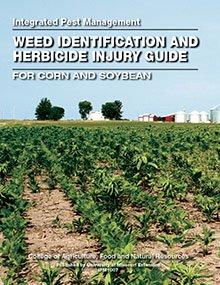
Weed Identification and Herbicide Injury Guide for Corn and Soybean
Reviewed $37
Weeds can significantly reduce corn and soybean yields. View photos of 141 weed species at different stages of development and learn to identify them in this publication. Also see photos and descriptions of symptoms for herbicide-injured plants.
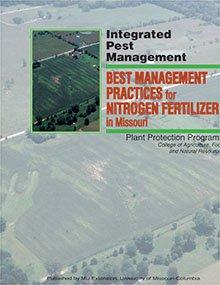
Best Management Practices for Nitrogen Fertilizer in Missouri
Reviewed
Learn how to manage nitrogen fertilizer in crops to boost yields, reduce losses, and enhance environmental outcomes through best practices.
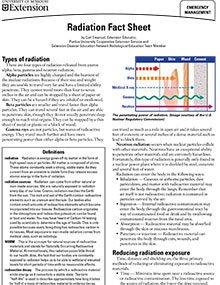
Radiation Fact Sheet
Reviewed
Explains types of radiation—alpha, beta, gamma, neutron—their sources, health effects, and ways to reduce exposure.
